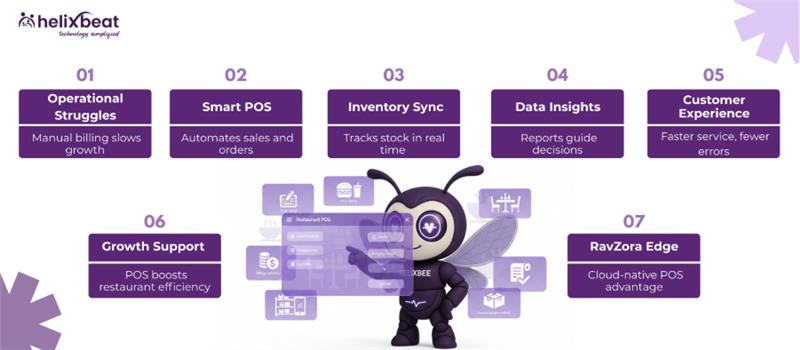According to a 2024 report by Statista, global ecommerce sales are expected to reach $6.3 trillion, with nearly 73% of purchases happening on mobile devices. Yet, many online stores still struggle with outdated interfaces, poor user experience, and disconnected backend systems.
For ecommerce leaders and digital strategists, this isn’t just a design issue—it’s a business performance gap. A slow, unoptimized store doesn’t just cost sales; it weakens customer trust, reduces retention, and limits scalability.
Digital transformation in ecommerce is no longer optional. It’s the only way to stay competitive, meet rising customer expectations, and build systems that support smarter marketing, inventory management, and real-time personalization.
In this blog, we’ll explain more about digital transformation and why online stores need it.

Table of Contents
Understand Digital Transformation in Ecommerce
Digital transformation in ecommerce means using modern technology to improve how your online store works, looks, and serves customers. It’s not just about making a website look better; it’s about changing the way your business runs behind the scenes too.
For example, it includes upgrading your ecommerce platform so it works faster, using AI to show customers products they’re more likely to buy, connecting your store to other apps like inventory or shipping tools, and automating tasks like order processing and customer service.
The goal is to make your store smarter, faster, and more customer-friendly so you can sell more, work more efficiently, and stay ahead of your competition.
Why Online Store Needs Digital Transformation?
In a highly competitive market, digital transformation in ecommerce is the key to delivering faster, smarter, and more personalized shopping experiences that today’s customers expect.
1. Customers Now Expect a Better Experience
People shopping online want things to be fast, simple, and personal. If your website takes too long to load, is hard to use on mobile, or doesn’t suggest what they might like, they’ll leave.
A digital transformation helps you fix this by making your store faster, mobile-friendly, and more personalized. This keeps customers happy and encourages them to come back.
2. Old Systems Make Growth Difficult
If your online store runs on old software, it may not work well with new tools or features. You might find it hard to add payment options, connect your inventory system, or launch marketing campaigns.
Updating your ecommerce platform through digital transformation makes it easier to grow your business, add features, and stay ahead of competitors.
3. You’re Missing Out on Smart Use of Data
You probably have a lot of useful data from sales, website visits, and customer feedback. But without the right tools, you can’t make the most of it.
Digital transformation helps you track what products are popular, what your customers want, and when to offer discounts. This makes your decisions smarter and helps you sell more.
4. Too Much Manual Work Slows You Down
If your team is spending time doing everything by hand like updating stock, replying to emails, or tracking orders; it can be slow and tiring.
Digital transformation brings in tools to automate these tasks. That way, things run faster, there are fewer mistakes, and your team can focus on growing the business instead.
Benefits of Digital Transformation in Ecommerce
- Improves Customer Experience: By using tools like AI chatbots, personalized recommendations, and mobile-friendly design, digital transformation helps create smoother and more engaging shopping journeys.
- Enables Omnichannel Selling: It allows you to connect your store with marketplaces, social media, and physical locations—so customers can shop across platforms without friction.
- Boosts Operational Efficiency: Automation of inventory updates, order tracking, and customer communication reduces manual work and speeds up your processes.
- Drives Smarter Decisions with Data: Real-time analytics and integrated dashboards help you understand customer behavior, track trends, and adjust your strategies on the go.
- Supports Business Scalability: Modern platforms and APIs make it easier to add new features, launch into new markets, and grow without overhauling your entire system.
4 Common Drawbacks of Digital Transformation in Ecommerce
Despite these challenges, digital transformation in ecommerce remains essential for long-term growth, as it helps businesses stay competitive and meet modern customer demands.
1. High Initial Costs: Upgrading platforms, buying new tools, and training staff can be expensive at the start.
2. Technical Complexity: Choosing the right systems and integrating them properly requires expert guidance.
3. Disruption During Transition: Store performance may slow down or face bugs while switching to new systems.
4. Security Risks: Adopting digital tools without proper safeguards can expose customer data to cyber threats.
Top Trends in Ecommerce Digital Transformation
1. Headless Commerce Architecture
Headless commerce gives brands the freedom to deliver fast, personalized experiences across multiple devices without redesigning the backend. According to a Gartner report, by 2025, 80% of retailers adopting headless systems will outperform competitors in speed and agility.
This architecture helps you stay ahead in a fast-moving market by making your storefront adaptable to emerging platforms.
2. AI-Powered Personalization
Artificial intelligence is now essential for crafting tailored shopping experiences. A McKinsey study found that personalization can drive a 10–15% revenue lift, especially when AI is used to analyze customer behavior in real-time.
From product suggestions to predictive search, AI helps boost both engagement and sales.
3. Voice and Visual Search Integration
As of 2024, over 30% of ecommerce searches are voice-activated, and visual search is growing rapidly, especially among Gen Z shoppers.
Platforms like Pinterest and Google Lens have seen massive adoption, pushing online stores to integrate voice and image-based search using AI and computer vision for easier product discovery.
4. Automation in Order Fulfillment
Retailers using automation tools for fulfillment experience up to 35% faster order processing and fewer errors, according to Shopify.
Automated inventory syncing, shipping updates, and return management not only improve accuracy but also free up internal teams to focus on strategy and growth.
5. Real-Time Data and Predictive Analytics
Businesses that use real-time analytics are 23 times more likely to acquire customers and 6 times more likely to retain them.
With predictive analytics, ecommerce leaders can forecast trends, optimize pricing, and launch data-driven marketing campaigns—long before their competitors react.
How Helixbeat Helps You Transform Your Ecommerce Business
At Helixbeat, we specialize in making digital transformation in ecommerce practical, affordable, and results-driven. Whether you’re running a growing D2C brand or a large multi-product store, our team helps you modernize your platform, streamline operations, and integrate advanced tools like AI and analytics without disrupting your day-to-day business.
What make us unique from others:
- API-first architecture
- AI-driven personalization tools
- Seamless backend automation
- Real-time analytics setup
- Expert support from strategy to execution
We don’t just install software; we build scalable digital solutions customized to your store’s needs. From ecommerce platform transformation to smart integrations, Helixbeat gives you the tech foundation to grow faster and serve better.
Get Your Free Ecommerce Transformation Plan Now.
FAQ:
1. What is ecommerce digital strategy?
An ecommerce digital strategy is a plan that outlines how your online store will use technology to grow sales, improve customer experience, and streamline operations. It includes everything from choosing the right platform and tools to using data, automation, and AI to stay competitive.
2. What is the role of AI in ecommerce?
AI in ecommerce helps personalize shopping, recommend products, automate customer service, and forecast demand. For example, AI can track a user’s behavior and suggest items they’re most likely to buy, making the shopping experience faster and more relevant.
3. What is digitalization in ecommerce?
Digitalization in ecommerce means turning traditional business processes like inventory tracking, order management, or customer support into digital workflows. It helps online stores work more efficiently by using technology to automate tasks, connect systems, and improve data access.
4. What are the four types of digital transformation?
The four types of digital transformation are:
- Process Transformation – Using tech to make workflows faster and more efficient.
- Business Model Transformation – Changing how you deliver value (e.g., subscription models).
- Domain Transformation – Entering new markets using digital tools.
- Cultural/Organizational Transformation – Shifting mindset and training teams to embrace digital change.
5. What is the role of digital transformation in ecommerce?
Digital transformation in ecommerce helps businesses stay competitive by improving speed, personalization, automation, and decision-making. It enables your store to scale easily, reduce manual work, and deliver better shopping experiences across devices and platforms.














